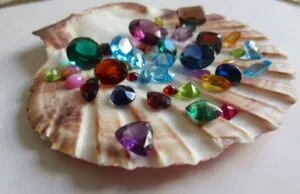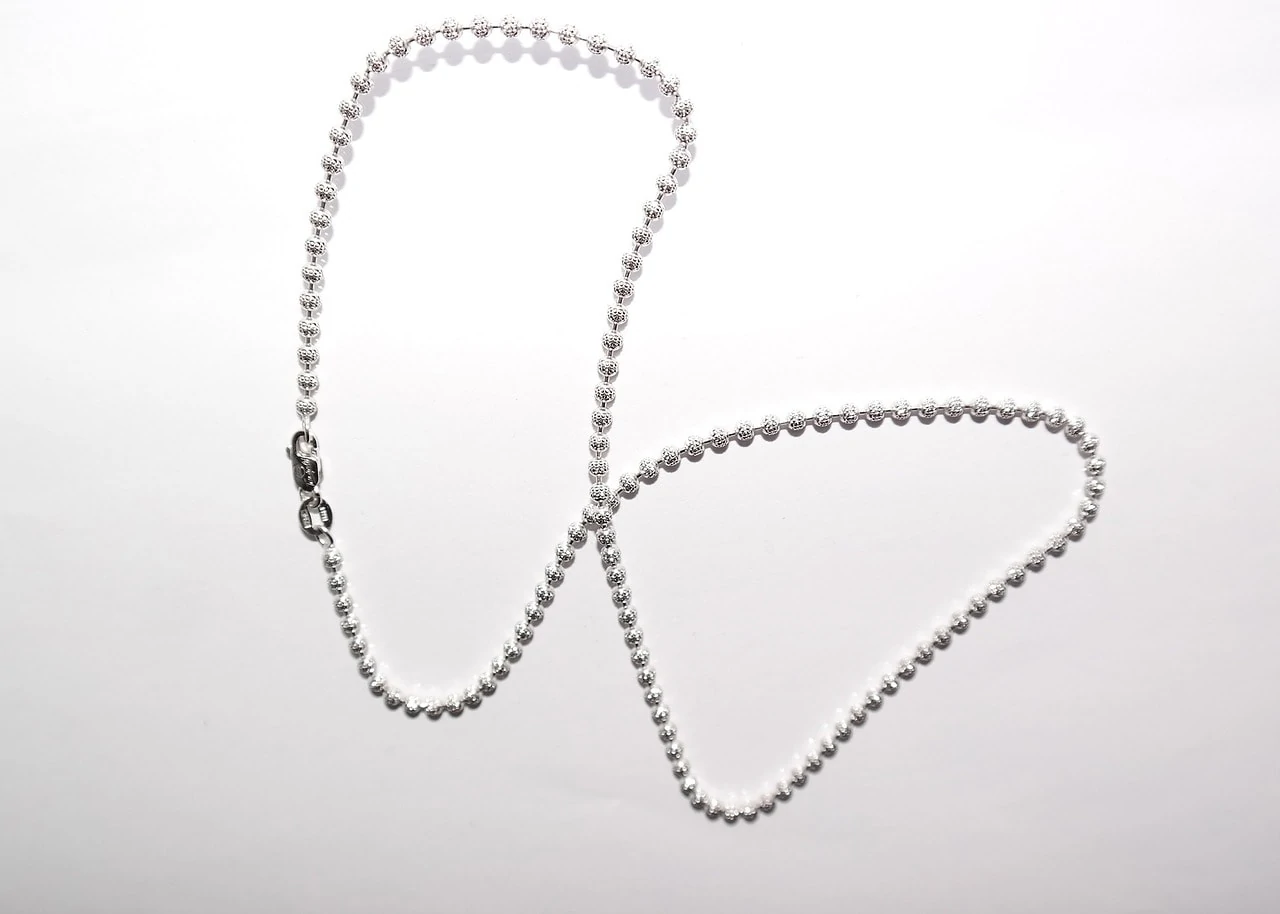
Table of Contents
In the world of jewelry, not all necklace chains are created equal. A chain’s strength and durability significantly impact its use and lifespan, making the choice of chain type crucial for jewelry enthusiasts.
Let’s explore different necklace chains, highlighting those that last and those prone to damage. This can help you to choose wisely for your jewelry collection, balancing style with lasting quality.
The History of Necklace Chains
Necklace chains have been around for thousands of years, with a history stretching across various cultures. Ancient civilizations like the Egyptians, Sumerians, and Mesopotamians first used chains for decoration and as symbols of status and wealth.
Initially made from natural materials like bones, shells, and stones, these chains later evolved to include metals like gold and silver. In ancient Egypt, for example, people often buried elaborate gold chains with the deceased to signify status and offer protection after death.
In medieval Europe, more intricate chains became popular among royalty and aristocrats. The Renaissance period brought even more detailed and ornate chain designs, crafted by skilled artisans.
The Industrial Revolution in the 19th century made chain production more efficient, making them accessible to more people. This era also introduced new styles and designs, following the changing fashion trends.
Today, necklace chains come in various styles, materials, and designs. They reflect both personal taste and the long history of jewelry-making. From simple, elegant designs to bold statement pieces, necklace chains remain a timeless and crucial part of jewelry collections around the world.
What are Some Strong Necklace Chains?
Necklace chains come in a variety of styles, each with unique characteristics and aesthetic appeals. Here are some of the most popular types:
1. Cable Chain
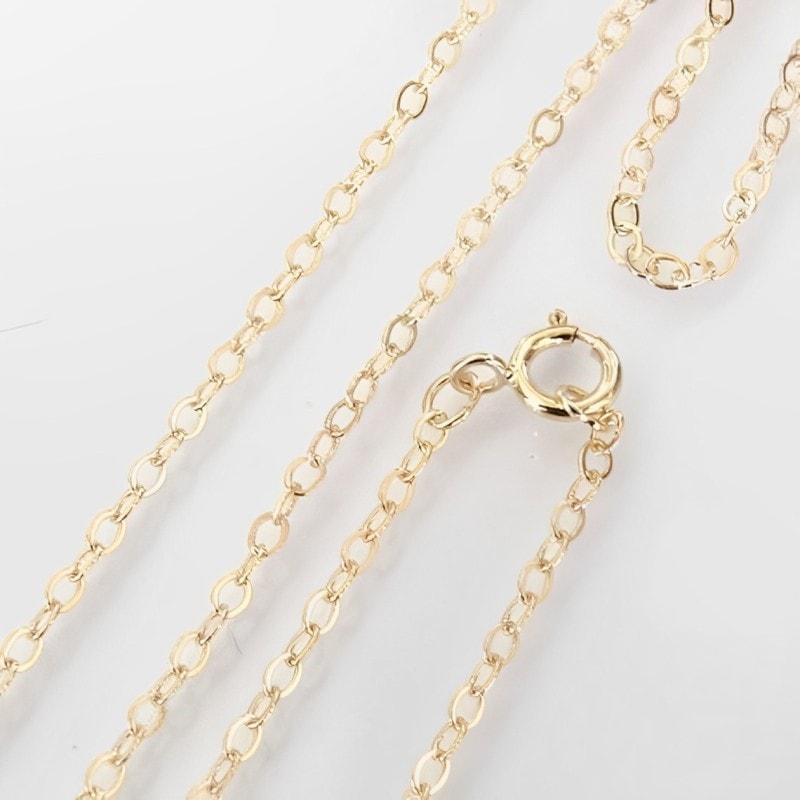
The cable chain, a timeless and adaptable option, features uniformly sized round links connected in a sequence. Its simplicity and classic design make it an ideal match for a wide array of pendants, from delicate charms to substantial statement pieces.
The strength of the cable chain lies in its versatility, allowing it to be worn casually or as part of a more formal ensemble. Available in a range of metals and sizes, it appeals to diverse tastes and can be layered with other chains for a more personalized look. Its durability and straightforward style make the cable chain a staple in any jewelry collection.
2. Box Chain
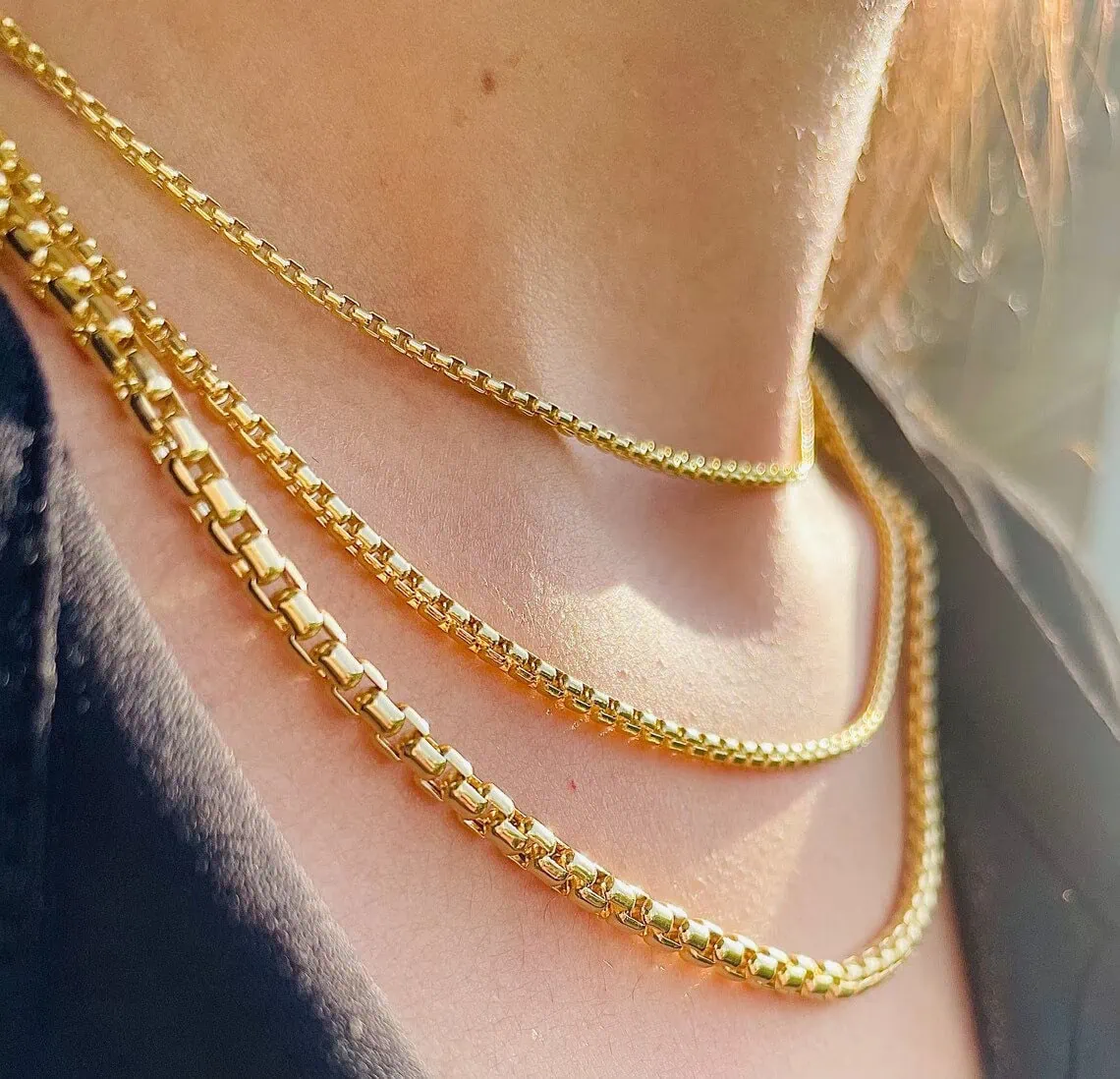
The box chain, characterized by its square links, offers a modern and refined look. The edges of these square links catch the light differently than rounded ones, giving the chain a distinctive shimmer. Its robust construction makes it suitable for holding heavier pendants without compromising on style.
Box chains are popular among both men and women, offering a gender-neutral appeal. They’re often chosen for their sleek profile, which works well with contemporary fashion, and are available in various thicknesses to suit different preferences and occasions.
3. Figaro Chain
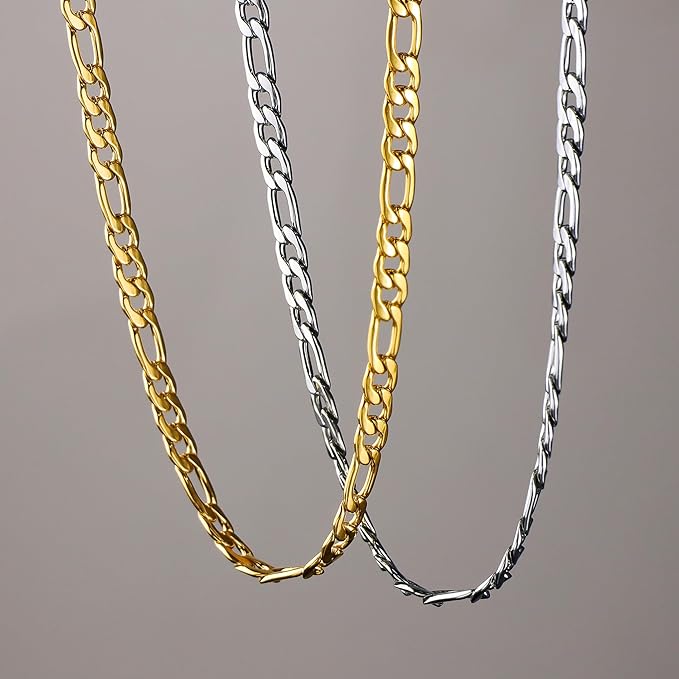
The Figaro chain, with its roots in Italy, presents an elegant pattern of small circular links punctuated by a longer oval link. This alternating pattern creates a rhythmic and visually interesting design, making it a striking choice both on its own and when paired with pendants.
The Figaro chain blends traditional craftsmanship with a touch of flair, suitable for both casual wear and more dressed-up occasions. Its versatility and unique design have made it a favorite in various jewelry styles, appealing to those who appreciate a blend of classic and modern aesthetics.
4. Curb Chain
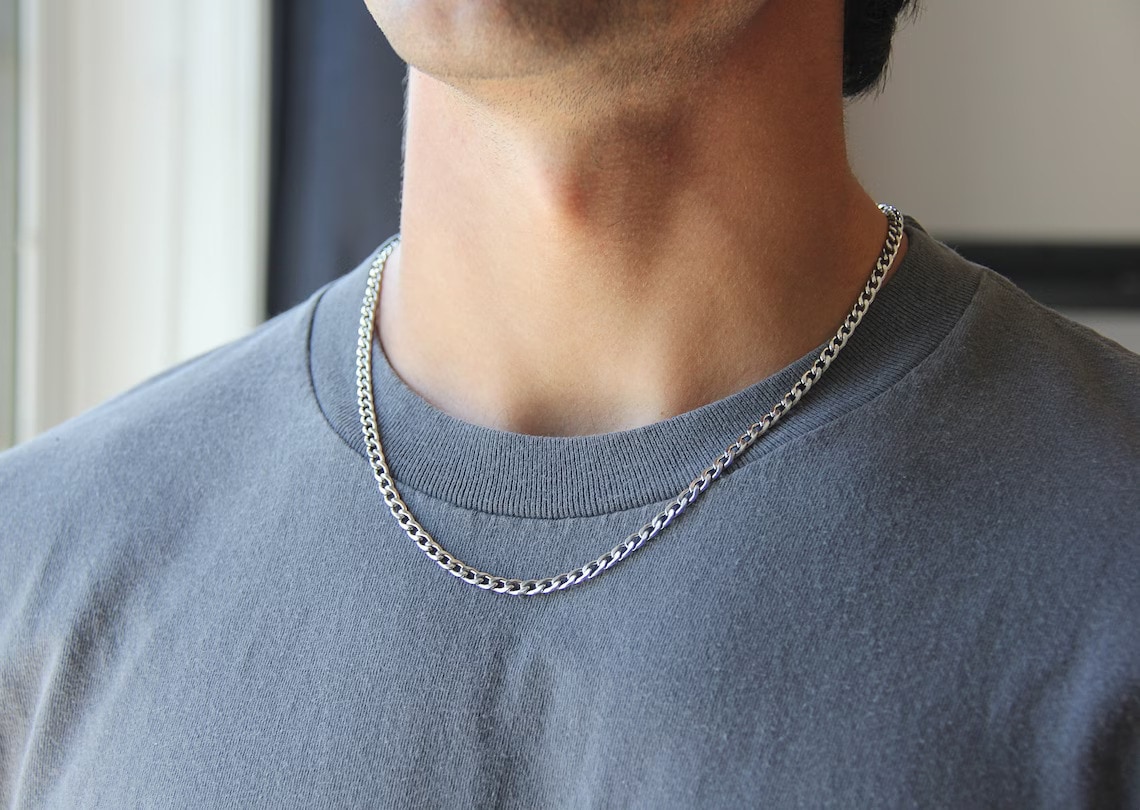
Known for its interlocked, uniform links that lie flat, the curb chain combines practicality with style. Its design, where each link is connected closely to the next, creates a smooth and sleek appearance. Curb chains are favored in men’s jewelry for their bold, masculine look but are also available in finer, more delicate designs that appeal to women.
This type of chain is versatile enough to be worn alone or with a pendant, fitting seamlessly into various fashion styles. The curb chain’s durability and classic look make it a timeless addition to any jewelry collection.
5. Anchor Chain
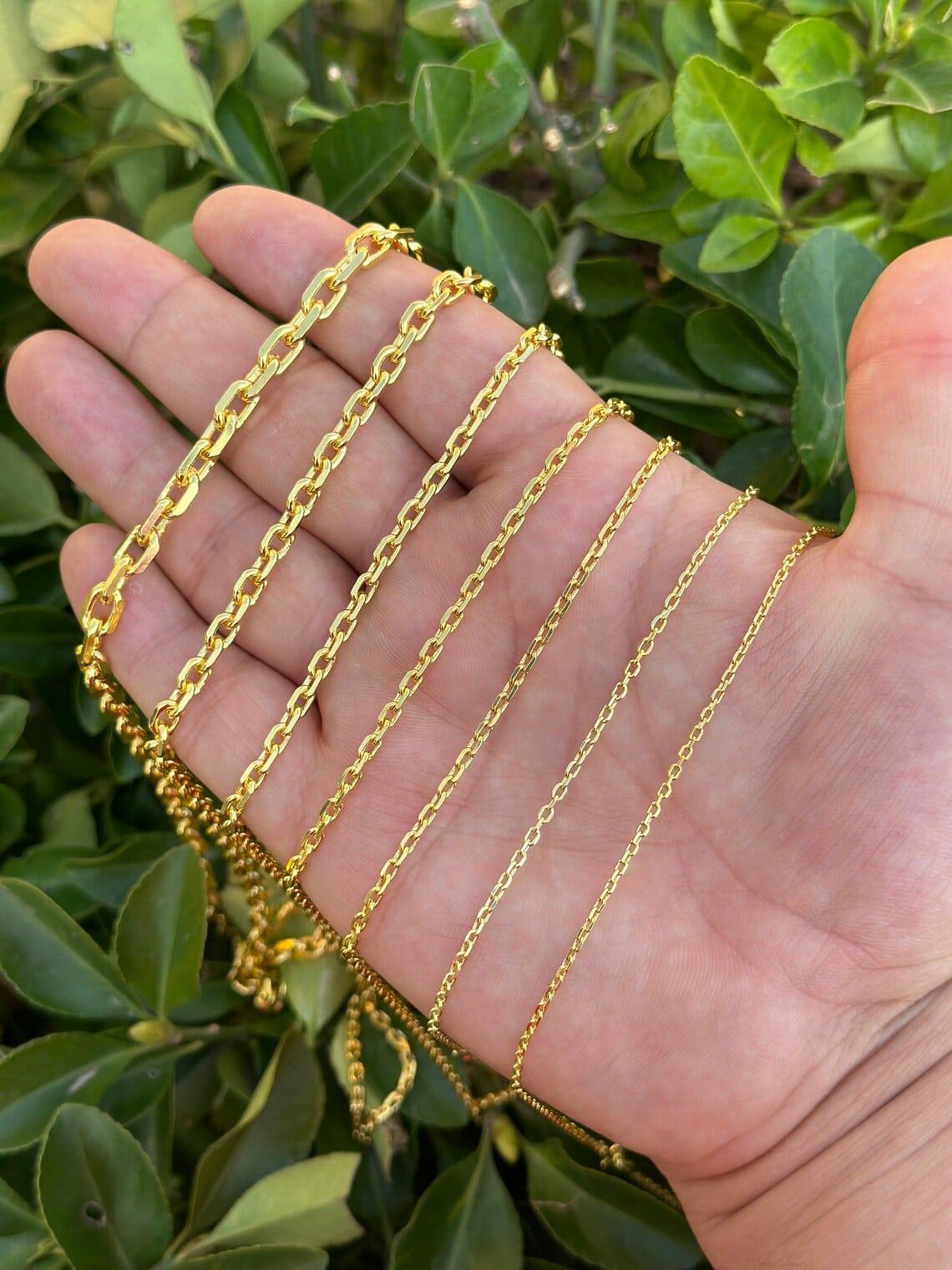
Drawing inspiration from the maritime world, the anchor chain mimics the robust chains used on ships. Its design typically features oval links with a horizontal bar across the center, symbolizing strength and stability.
This type of chain is known for its durability, making it an excellent choice for everyday wear and for those who prefer a nautical or rugged aesthetic. The anchor chain’s strong construction and symbolic association with resilience.
6. Wheat or Spiga Chain
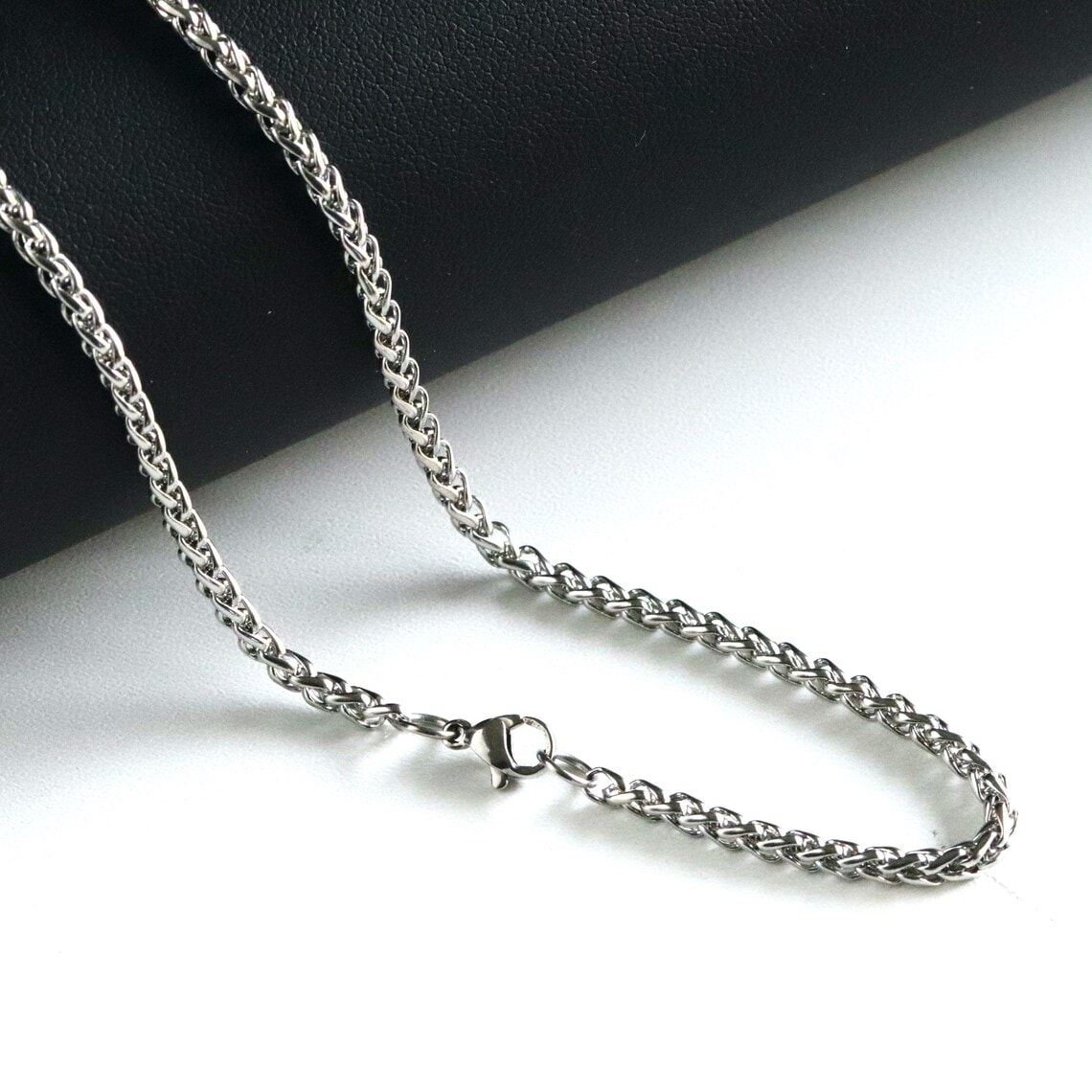
The wheat or Spiga chain, named after its resemblance to wheat stalk tips, stands out as an elegant jewelry chain. It features twisted oval links woven in a symmetrical pattern, mimicking wheat grains.
This detailed design not only looks visually appealing and sophisticated but also adds strength and durability to the chain. It tangles and kinks less than other chain types, making it a good everyday accessory.
The wheat chain’s intricate weave ensures it’s flexible and comfortable against the skin. Available in various metals like gold, silver, and platinum, it’s versatile for both casual and formal wear. You can wear it alone as a standout piece or pair it with a pendant for extra elegance.
7. Singapore Chain
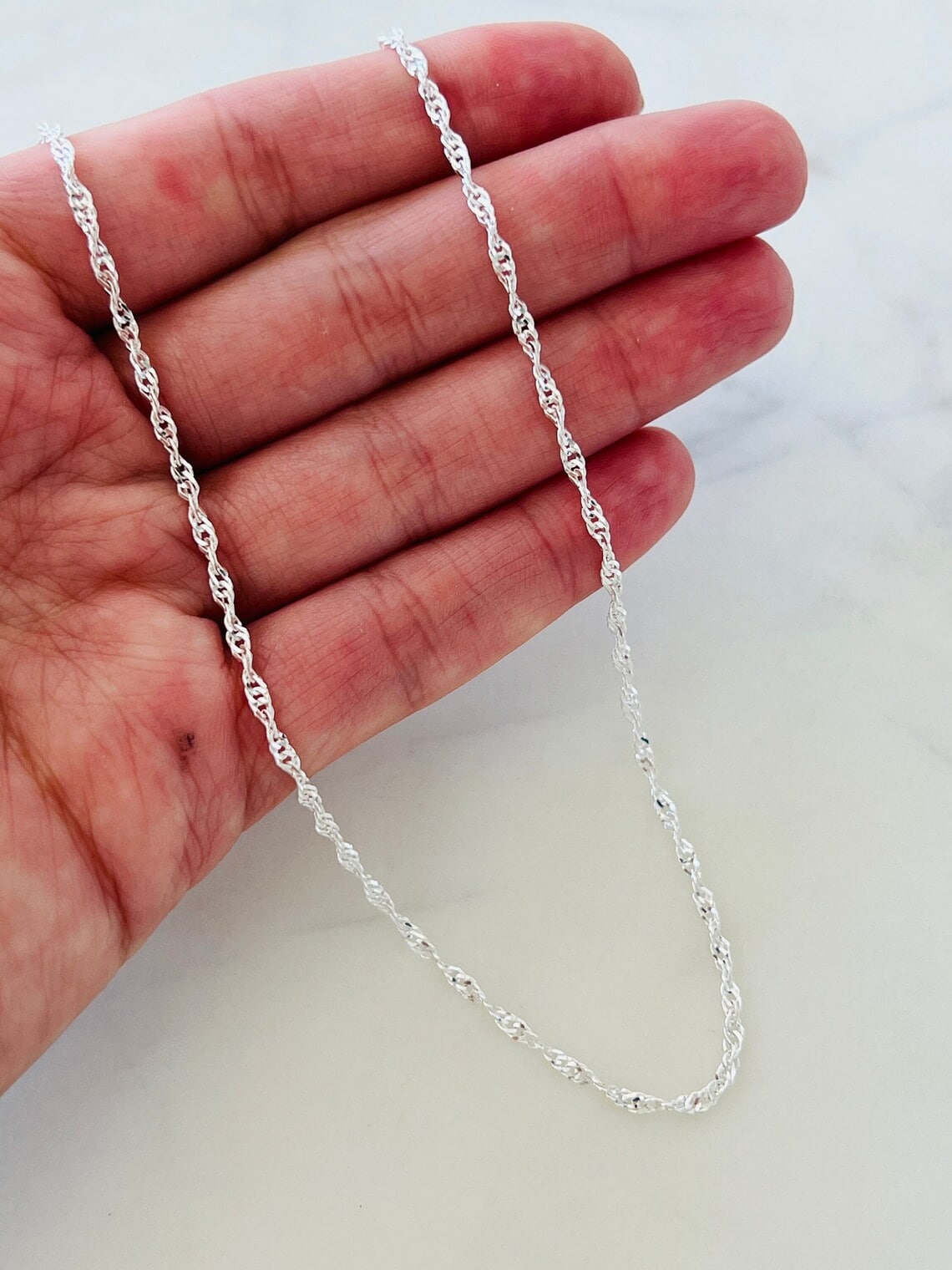
The Singapore chain is an elegant and eye-catching jewelry chain, famous for its twisted, diamond-cut design that sparkles. Made up of interlinked, twisted segments, it catches light uniquely, giving off a characteristic shine.
This chain’s distinct texture and flexibility make it a favorite for those looking for a subtle yet striking accessory. Lightweight and comfortable, it sits flat on the skin, blending comfort with style. Versatile for both casual and formal wear, the Singapore chain comes in different metals like gold, silver, and platinum. Whether worn alone or with a pendant, it adds sophistication to any look.
What are Some Weaker Necklace Chains?
Now let’s take a look at some of the weaker necklace chains:
1. Rope Chain
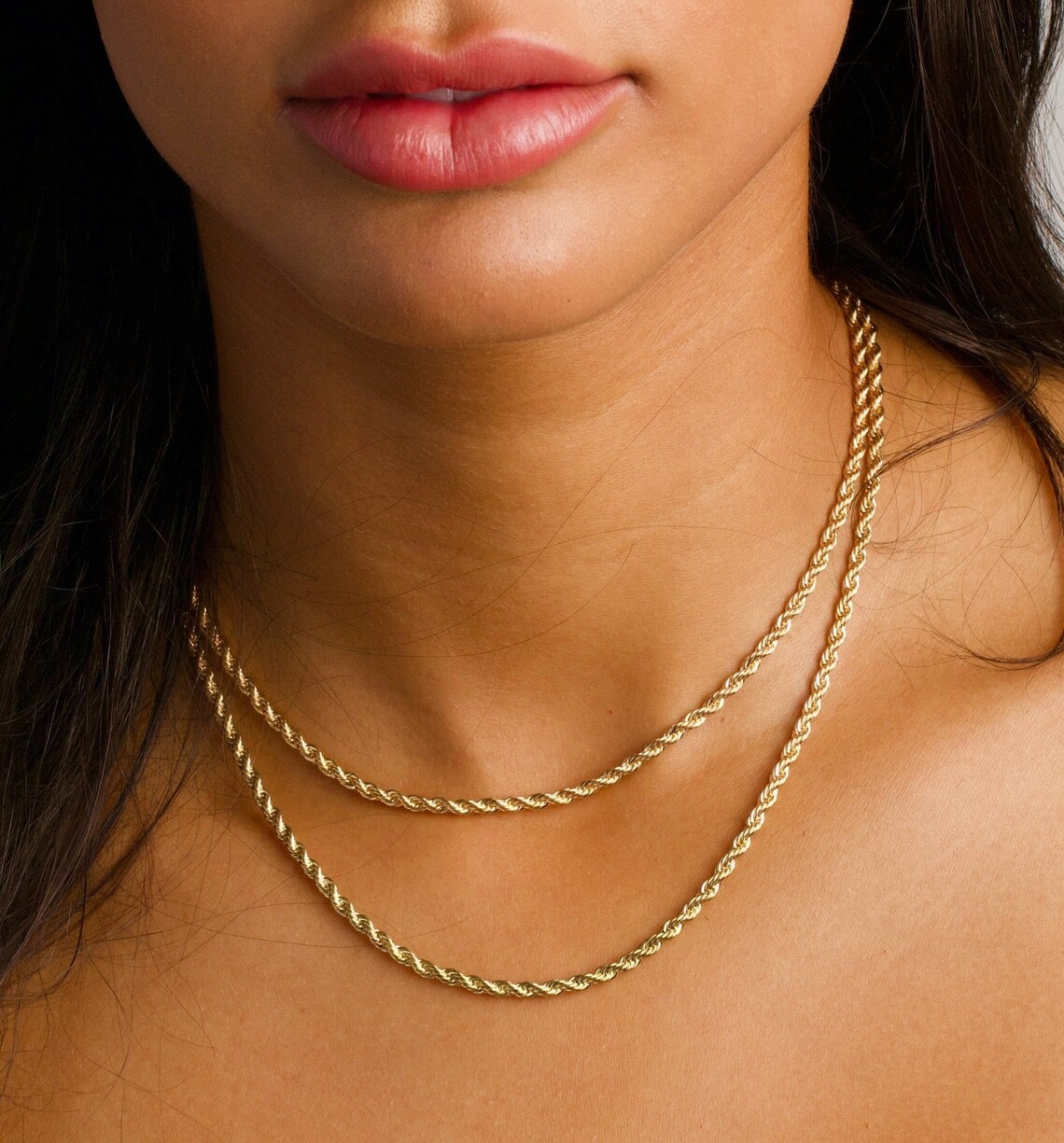
Resembling the twists of a rope, this chain type features intertwined oval links that give it a textured, dimensional look. Rope chains range from thin, delicate versions ideal for a subtle accent to thicker, bolder styles that make a statement on their own. They’re celebrated for their durability and strength, making them a practical choice for everyday wear.
The intricate pattern of the rope chain reflects light beautifully, adding sparkle and sophistication to any outfit. Its versatility and resilience make it a popular choice for those looking for both elegance and durability in their jewelry.
2. Snake Chain
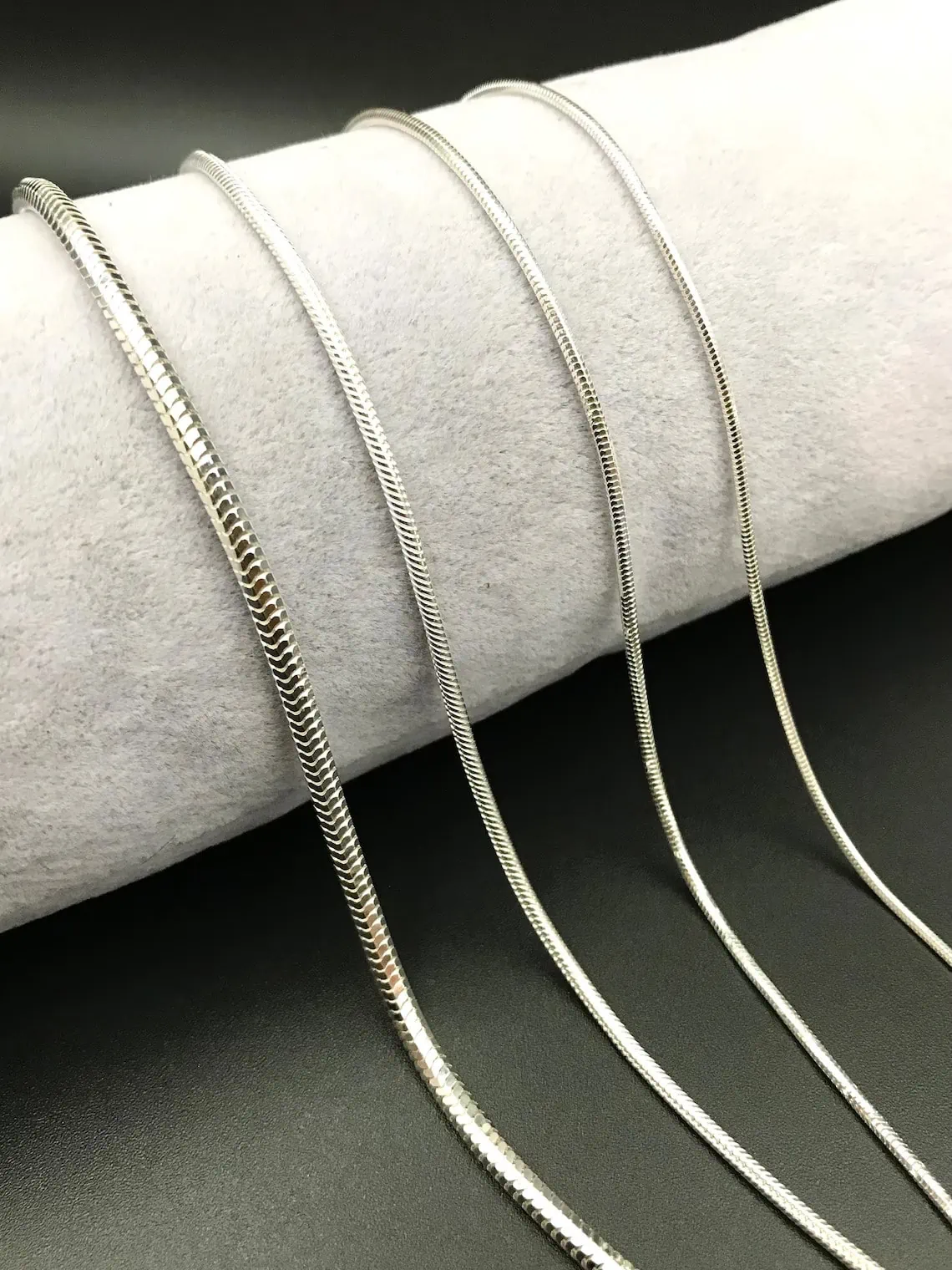
The snake chain, composed of tightly connected rings, has a smooth, sleek surface resembling a snake’s skin. This chain is known for its flexibility, draping elegantly and conforming to the body’s contours. However, its tightly linked structure makes it prone to kinking if not stored properly.
The snake chain’s contemporary look and smooth texture make it a popular choice for modern jewelry designs, often worn alone for a minimalist statement or with a simple pendant for added interest.
3. Herringbone Chain
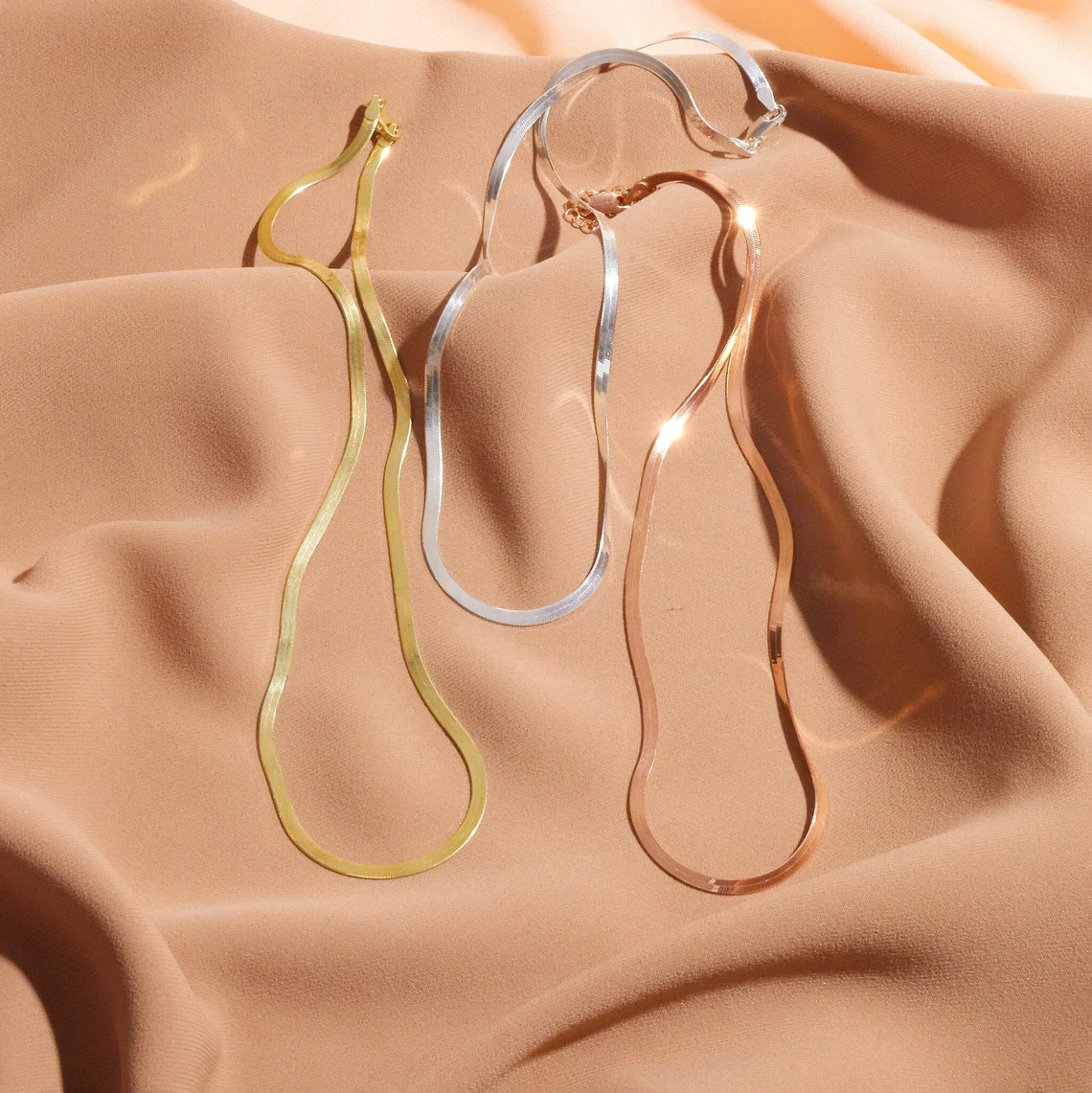
The herringbone chain features a distinctive V-shaped link pattern, creating a fluid, mirror-like surface. This chain lies flat against the skin, providing a comfortable fit and a reflective sheen. Its intricate design makes it an eye-catching piece, suitable for formal occasions or as a statement piece in casual settings.
However, the herringbone chain requires careful handling as it is more prone to bending and kinking than other types, making it a choice for those who prioritize style and are willing to give their jewelry extra care.
4. Bead Chain
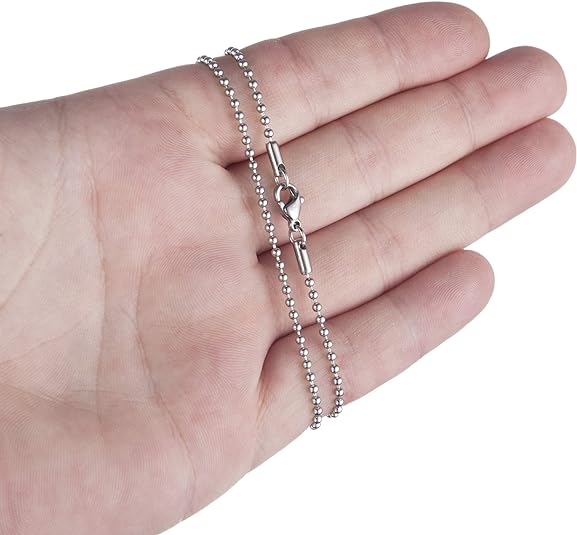
Comprising small metal balls linked together, the bead chain offers a playful and delicate look. Each bead is connected by a short length of wire, similar to a rosary, creating a flexible and lightweight chain. This type of chain is often used for dog tags or charm necklaces, adding a touch of whimsy and movement.
Its simple yet versatile design makes it suitable for casual wear and for layering with other chain styles, appealing to those who enjoy a more understated and versatile approach to their jewelry.
5. Omega Chain
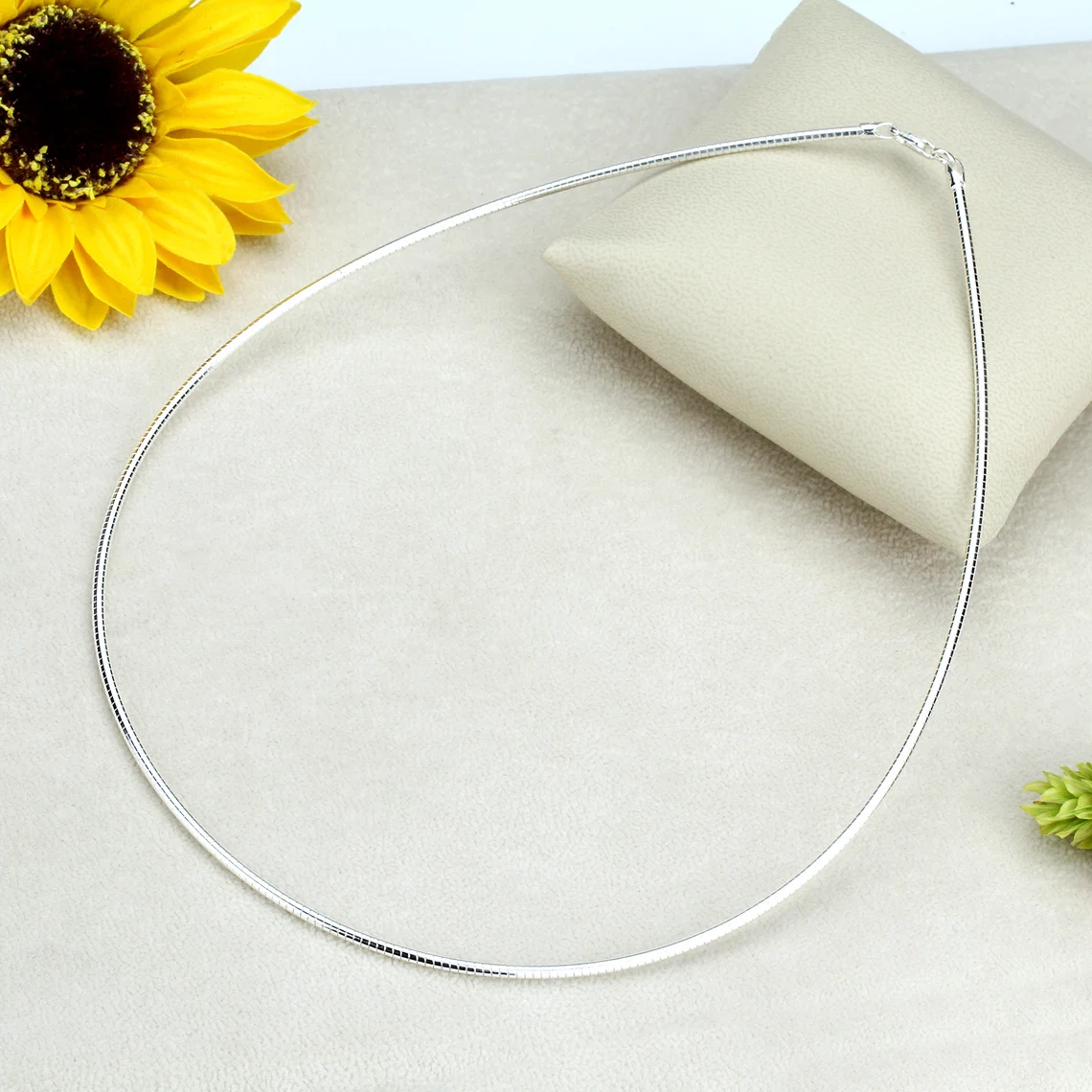
The Omega chain, with its smooth, rounded metal pieces fitting closely together, offers a sleek and stylish look. Its design creates a solid, ribbon-like appearance with a shiny surface. The chain’s rigid form maintains its shape on the neck, giving a modern look.
Made usually in gold or silver, some Omega chains have a rhodium veneer for extra durability and shine. Versatile in use, it works well alone as a statement piece or with various pendants and charms. Its bold yet elegant design fits both formal and casual wear, adding a touch of sophistication to any outfit.
Different Types of Metal
When choosing a necklace chain, the type of metal is key for its strength and durability. Metals like stainless steel, platinum, and solid gold are great for chains that need to last. Stainless steel is tough, doesn’t rust or tarnish, and is perfect for daily wear.
Platinum is more costly but very strong and heavy, and it resists wear and tarnish. Solid gold, available in different karats, strikes a balance between being moldable and durable, although higher karat gold is softer.
However, gold-plated metals, despite looking like gold, wear down over time, revealing the underlying metal. Hollow metal chains are lighter and cheaper but can dent and warp easily. Base metals like brass or copper don’t last as long as noble metals and can tarnish when reacting with skin oils or moisture.
Sterling silver, another popular choice, shines brightly and is more affordable. It’s harder than gold but can get scratched and tarnish, so it needs regular care. It’s important to weigh a metal’s strength, how much care it needs, and how it looks to find a chain that fits your lifestyle and taste.
Chain Thickness
The chain thickness will play a critical role in its durability. Thicker chains have larger links, which are more resistant to damage.
When pairing a pendant with a chain, it stands to reason that you can’t hold a massive pendant with a thin, delicate chain. The chain needs to be in proportion to the pendant to ensure that it can hold the pendant.
Tips to Remember
Just because a chain is considered weak, doesn’t mean it can’t function as a necklace chain. It just means that you’ll have to give it appropriate care to ensure that it lasts a long time. Here are some guidelines in taking care of your necklace chain.
- Clean your chain periodically. A build-up of dirt and dust can cause chain links to become damaged and even break. Using warm water and a mild soap is often the best way to clean a chain, whether it’s made of gold, platinum or stainless steel. Check out how to clean and care for your gold chain.
- Store your chains carefully. Improper storage results in tangled, kinked chains. A tip for storing thin chains is to thread your chain through a drinking straw and fix the clasp at the ends. Also, avoid storing chains with harder items like diamonds, as these can scratch the chain.
- Choose the right chain for the purpose. If you’re looking for a chain to hold a pendant, choose a strong chain at an appropriate thickness. If you’re looking for a statement chain to standalone, any thick chain will do the trick.
Wrapping Up
There are many chain options to choose from, ranging from strong to weak. The chain you decide on should depend on how you intend to use it.
By choosing a quality metal and the right chain thickness and type for your purpose, you can ensure that you’ve selected the best chain for your needs.







